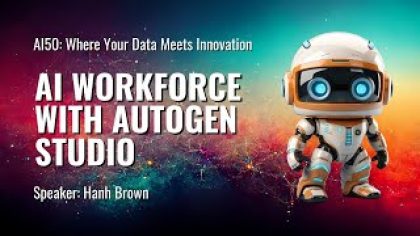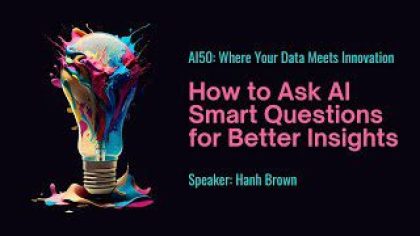Table of Contents
ToggleOur world is experiencing a massive demographic shift, with an increasing number of seniors in need of affordable housing and transportation. As the elderly population grows, it becomes essential to find innovative solutions to ensure their well-being and accessibility to essential services. Artificial intelligence (AI) has the potential to address these needs, transforming the way we approach senior care and ultimately improving their quality of life.
Utilizing AI in the design and construction process can revolutionize the way affordable housing is built for seniors. By analyzing large datasets, AI can optimize space usage, identify cost-efficient materials, and even predict potential maintenance issues. This leads to the creation of housing units that are not only cost-effective but also specifically tailored to seniors’ unique needs.
AI’s Role in Affordable Housing for Seniors
As seniors age, they often face challenges in maintaining and navigating their homes. Enter artificial intelligence: a potential game-changer in providing affordable, smart housing solutions for seniors. With AI’s capacity to predict needs, optimize resources, and offer interactive support, it’s transforming the way senior housing is approached, enabling greater independence, safety, and affordability.

Smart Home Technologies for Independent Living
AI-powered smart home technologies are revolutionizing senior living by providing greater autonomy and safety. These innovations help seniors maintain independence and age in place, allowing them to stay in their homes longer and reducing the demand for costly assisted living facilities.
Voice-controlled appliances, such as smart speakers, enable seniors to operate various devices without physical effort, accommodating those with limited mobility or dexterity. Automated lighting and heating systems adjust according to individual preferences, improving energy efficiency and reducing costs.
Moreover, AI-driven monitoring systems can detect falls, monitor vital signs, and alert caregivers or medical professionals in case of emergencies. These safety features provide peace of mind for both seniors and their loved ones, ensuring that timely assistance is available when needed.
AI-driven Solutions for Affordable Housing Allocation
AI can play a vital role in the allocation of affordable housing units for seniors. By analyzing large datasets, AI can identify areas with high demand for senior housing and inform the development of targeted housing policies.

Machine learning algorithms can predict which seniors are most likely to require affordable housing based on factors such as income, health, and living conditions. This information allows housing authorities to prioritize resources effectively and ensure that those in greatest need receive assistance.
AI can also streamline the housing application process, automating tasks like tenant screening, rent calculations, and waiting list management. This efficiency enables housing providers to focus on creating supportive communities for senior residents, fostering a higher quality of life.
Furthermore, AI-driven predictive analytics can inform housing maintenance, ensuring that units remain safe and accessible for seniors. By identifying potential issues before they become critical, housing providers can minimize disruptions and maintain a comfortable living environment for their elderly residents.
AI’s Role in Transportation for Seniors
Mobility can be a concern for older adults, but AI is revolutionizing senior transportation. Autonomous vehicles, AI-powered public transit, and intelligent journey-planning tools are providing seniors with safer, more accessible ways to navigate their communities, ensuring they stay connected and independent.
Accessible Transportation and Autonomous Vehicles
Autonomous vehicles (AVs) have the potential to significantly improve transportation options for seniors, offering a more accessible and convenient mode of transport. By eliminating the need for human drivers, AVs can cater to seniors with limited mobility or cognitive abilities, enhancing their independence and reducing their reliance on caregivers or public transportation systems.
AVs can be designed with seniors in mind, incorporating features such as easy entry and exit, ample seating space, and clear audio and visual cues. These adaptations make AVs a more suitable transportation option for the elderly. Decreasing the risk of accidents and promoting a comfortable travel experience.
AI-based Public Transportation Planning
AI can significantly enhance public transportation planning, providing seniors with more efficient and accessible transit options. By analyzing various factors, such as traffic patterns, demographics, and weather conditions, AI can optimize routes and schedules to better accommodate the needs of senior riders.
Using machine learning algorithms, AI can predict demand for public transportation services and allocate resources accordingly. This ensures that seniors have access to reliable transit options, reducing their wait times and improving overall service quality.
Additionally, AI can help design more accessible transit stops and stations by analyzing user data and identifying potential barriers for seniors. This information can guide infrastructure improvements. Such as the installation of ramps, elevators, and seating areas, making public transportation more accommodating for elderly passengers.
The Benefits of AI in Housing and Transportation for Seniors
AI is poised to significantly improve seniors’ quality of life by addressing two critical areas: housing and transportation. Its capabilities in predictive analysis, automation, and personalized support are shaping new paradigms in senior care, empowering older adults with safer homes and more efficient transportation, leading to a more connected and fulfilling life.

Enhanced Accessibility and Convenience
One of the primary benefits of AI in housing and transportation for seniors is the enhanced accessibility and convenience it offers. As the elderly population grows, their need for easily accessible housing and transportation solutions becomes increasingly important. AI-driven innovations can significantly improve the lives of seniors by catering to their unique needs and preferences.
In housing, AI can optimize design and construction processes to create living spaces specifically tailored to seniors. These living spaces can be equipped with smart home technologies that enable seniors to control appliances and other home functions through voice commands or simple gestures, accommodating those with limited mobility or dexterity.
In transportation, AI-powered autonomous vehicles and personalized transportation services can provide seniors with tailored travel options that prioritize their comfort and accessibility. AI-based public transportation planning can also lead to more efficient and accommodating transit systems that cater to the needs of elderly passengers.
By enhancing accessibility and convenience, AI-driven solutions empower seniors to maintain their independence, participate in their communities, and enjoy a higher quality of life.
Cost-effective Solutions
AI-driven solutions in housing and transportation can lead to significant cost savings for seniors, housing providers, and transportation systems. By optimizing design, construction, and management processes, AI can help create affordable housing units that minimize long-term maintenance costs and maximize the efficient use of resources.
Smart home technologies can reduce energy consumption and costs by automatically adjusting lighting, heating, and cooling systems according to individual preferences and usage patterns. These savings are particularly beneficial for seniors on fixed incomes who may struggle to afford rising utility costs.
In transportation, AI-powered autonomous vehicles have the potential to reduce the cost of travel by eliminating the need for human drivers. And improving fuel efficiency through optimized routing. AI-driven public transportation planning can lead to more efficient allocation of resources, resulting in cost savings for both passengers and transit systems.
Moreover, AI can enable more accurate and efficient allocation of affordable housing resources. Ensuring that seniors in need receive assistance while reducing the administrative burden on housing providers.
Improved Safety and Security
AI-driven solutions can significantly enhance the safety and security of seniors in both housing and transportation. In housing, AI-powered monitoring systems can detect falls or other emergencies, alerting caregivers or medical professionals to provide timely assistance. These systems can also monitor vital signs, enabling early intervention in case of health issues.
Smart home technologies can improve security by incorporating features such as AI-powered security cameras, motion sensors, and smart locks. These innovations provide peace of mind for seniors and their loved ones, ensuring that their homes remain safe and secure.
In transportation, autonomous vehicles can reduce the risk of accidents by eliminating human error. While AI-based public transportation planning can lead to safer transit stops and stations through the identification of potential hazards.
The Risks and Challenges of AI in Housing and Transportation for Seniors
While AI offers promising solutions in senior housing and transportation, it also brings unique risks and challenges. From privacy concerns to accessibility issues, these emerging technologies must be navigated carefully to ensure they truly benefit seniors without compromising their security or dignity.
Data Privacy and Security Concerns
Despite the numerous benefits of AI-driven solutions for seniors, there are also risks and challenges associated with the use of this technology. One such concern is data privacy and security. AI systems often rely on the collection and analysis of large amounts of personal data to function effectively. Which raises questions about the protection of sensitive information.
Seniors may be particularly vulnerable to privacy breaches, as they may not be as familiar with digital security best practices, making them an attractive target for cybercriminals. Additionally, the use of AI-powered monitoring systems, smart home technologies. And personalized transportation services can generate vast amounts of personal data that must be stored securely and managed responsibly.
To address these concerns, it is crucial to implement robust data privacy and security measures. Such as encryption, access controls, and regular security audits. Furthermore, transparent and easily understandable privacy policies should be provided to ensure seniors are aware of the data being collected and how it is being used.
The Digital Divide and Exclusion
Another challenge associated with AI-driven solutions for seniors is the digital divide and the potential for exclusion. Not all seniors have equal access to the technology and infrastructure required to benefit from AI innovations in housing and transportation. Factors such as income, education, and geographic location can create disparities in access to and familiarity with digital technologies.
To prevent the exclusion of seniors who are less digitally connected. It is important to invest in digital literacy programs, affordable internet access, and user-friendly technologies specifically designed for seniors. Additionally, AI-driven solutions should be designed with inclusivity in mind. Ensuring that they cater to the needs of a diverse population with varying levels of digital proficiency.
Ethical Considerations in AI-driven Solutions
The use of AI-driven solutions in housing and transportation for seniors also raises ethical considerations that must be addressed. One such issue is the potential for algorithmic bias, which can occur. When AI systems inadvertently perpetuate or exacerbate existing inequalities. For instance, AI algorithms used in housing allocation or transportation planning might discriminate against certain demographic groups. If the data used to train these algorithms is biased.
To ensure that AI-driven solutions are ethical and equitable, it is essential to prioritize fairness, transparency, and accountability in AI development. This includes using diverse and representative datasets to train AI algorithms, regularly auditing AI systems for bias, and involving diverse stakeholders in the design and implementation of AI-driven solutions.
Furthermore, ethical considerations should extend to the impact of AI on employment in sectors such as transportation and housing management. The potential displacement of human workers by AI-driven automation should be addressed. Through reskilling programs and the development of new job opportunities that leverage the unique skills and abilities of human workers.
Recommendations for Harnessing AI’s Potential in Senior Housing and Transportation
Harnessing AI’s potential in senior housing and transportation requires thoughtful and inclusive strategies. As we envision a future where AI supports seniors’ independence and safety, it’s crucial to address the risks, consider ethical implications, and strive for equitable access. Here, we propose practical recommendations for responsible AI deployment in these critical areas.
Implementing AI Ethics Guidelines
To harness AI’s potential in senior housing and transportation while mitigating its risks and challenges, it is crucial to implement AI ethics guidelines. These guidelines should focus on principles such as fairness, transparency, accountability, and privacy.
Developers of AI-driven solutions should prioritize the use of diverse and representative datasets. This can minimize algorithmic bias and ensure that AI systems cater to the needs of a wide range of seniors. Regular audits of AI algorithms should be conducted to identify and address any biases or discriminatory outcomes.
Transparent communication with seniors and other stakeholders is essential to build trust and ensure that AI-driven solutions are designed with their best interests in mind. Privacy policies and data usage practices should be clear. And easily understandable to help seniors make informed decisions about their participation in AI-driven programs.
Encouraging Collaboration Between AI Developers, Government, and Senior Care Organizations
Collaboration between AI developers, government agencies, and senior care organizations is essential to maximize the benefits of AI-driven solutions in housing and transportation for seniors. By working together, these stakeholders can develop policies, regulations, and standards. That supports the responsible and equitable deployment of AI-driven solutions.
Such collaboration can also foster the development of innovative, user-centric solutions that cater to the unique needs of seniors. Government agencies and senior care organizations can provide valuable insights into the specific challenges seniors face in accessing affordable housing and transportation. AI developers can contribute their technical expertise to create solutions that address these challenges effectively.
Joint initiatives, pilot programs, and public-private partnerships can help accelerate the development and deployment of AI-driven solutions in senior housing and transportation. Through collaboration, we can create a supportive ecosystem that fosters innovation, improves seniors’ quality of life, and promotes their independence and well-being.
Promoting Digital Literacy Among Seniors
Promoting digital literacy among seniors is crucial to ensure that they can fully benefit from AI-driven solutions in housing and transportation. Digital literacy programs should focus on teaching seniors how to use digital devices, Access online services, and maintain their privacy and security in the digital world.
These programs can be offered through senior centers, community organizations, libraries, or educational institutions. They should be designed to accommodate seniors’ unique learning needs and preferences, incorporating hands-on activities, demonstrations, and personalized instruction.
In addition to promoting digital literacy among seniors, it is essential to develop user-friendly technologies that cater to their needs. AI-driven solutions should be designed with accessibility and usability in mind, featuring intuitive interfaces, clear instructions, and easily understandable language.
FAQs
How can AI improve affordable housing for seniors?
AI can improve affordable housing for seniors by optimizing design and construction processes and creating living spaces tailored to their unique needs. AI-driven solutions can also streamline housing allocation. Ensuring that resources are distributed fairly and efficiently among seniors in need.
How does AI enhance transportation options for seniors?
AI enhances transportation options for seniors by enabling the development of autonomous vehicles designed with their needs in mind. As well as optimizing public transportation planning to better accommodate elderly passengers. This can lead to more accessible, convenient, and safe transportation options for seniors.
What are some concerns related to data privacy and security in AI-driven solutions for seniors?
AI-driven solutions often rely on the collection and analysis of personal data, raising concerns about the protection of sensitive information. To address these concerns, it is essential to implement robust data privacy and security measures. Such as encryption, access controls, and regular security audits.
How can the digital divide be addressed to ensure all seniors benefit from AI-driven solutions in housing and transportation?
To address the digital divide, it is important to invest in digital literacy programs and affordable internet access. And user-friendly technologies specifically designed for seniors. AI-driven solutions should be designed with inclusivity in mind. Ensuring they cater to the needs of a diverse population with varying levels of digital proficiency.
What role do ethical considerations play in AI-driven solutions for senior housing and transportation?
Ethical considerations in AI-driven solutions involve ensuring fairness, transparency, and accountability in AI development. As well as addressing the potential impact of AI on employment in sectors such as transportation and housing management. By prioritizing ethical considerations. We can create responsible and equitable AI-driven solutions that benefit seniors.
How can collaboration between AI developers, government, and senior care organizations enhance AI-driven solutions for seniors?
Collaboration ensures that AI-driven solutions are designed with seniors’ unique needs and preferences in mind. Establishing public-private partnerships, creating opportunities for dialogue, and developing policies and regulations can foster collaboration and enhance AI-driven solutions for seniors.
References
- https://academic.oup.com
- https://www.ncbi.nlm.nih.gov
- https://agelab.mit.edu

















